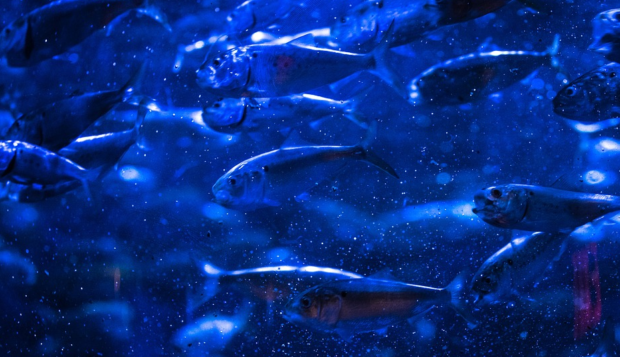Men…what?! Menhaden
by Cloe Waterfield for Conscious Breath Adventures
How can so many of us be completely oblivious to a fish described as the greatest fish in the sea? It is even the subject and title of an entire book.

A school of Menhaden fish. Photo Crabby Taxonomist/Flickr.com – New Orleans Public Radio
We don’t even eat these fish – they are bony and so oily that they spoil quickly. Yet they are second only to Alaskan pollock in total tonnage of US landings. Most Americans have never even heard of them.
The Atlantic menhaden, Brevoortia tyrannusis, ranges from Nova Scotia to Florida. They reach up to 15” in length and can live for 10-12 years. They spawn in coastal areas and estuaries, like the Chesapeake Bay. Healthy ecosystems are critical for the survival of their young before they head out to sea as adults.
Menhaden can form vast schools, up to 200,000 fish. For whales, they are a critical food source particularly in the mid-Atlantic US and Gulf of Maine.
Here are 5 things you probably didn’t know, but should, about the marvelous menhaden:
1.) They have a bunch of weird names
The name menhaden itself is a bit of a mouthful (perhaps that’s why they are not more widely appreciated). Other common names include mossbunker, pogy, alewife, shad, bunker and fatback.
Maybe the oddest name, though, is bugfish. This unique moniker arises from a peculiar association with an isopod called Olencira praegustator, a crustacean which lives as a parasite inside their mouths.
The name menhaden is derived from their Native American name, munnawhatteaug, meaning ‘that which manures’, because….


